Introduction: In this article, Melissa Davenport Berry describes how Puritan fashion laws in the Massachusetts Bay Colony tried to control women’s clothing, hair styles and headdresses – without much success. Melissa is a genealogist who has a website, americana-archives.com, and a Facebook group, New England Family Genealogy and History.
Author’s Note: A few months back, I wrote about how residents in the Massachusetts Bay Colony (1628–1691) waged a war in the name of fashion. (See: Our Puritan Ancestors: Mass Bay Residents Waged a Fashion War in the Colony.)
Well, they did not stop with apparel: our Puritan ancestors also waged a fashion war against men’s long hair, which I wrote about recently. (See: Our Puritan Ancestors’ Fashion War against Long Hair.)
Today we look at the women of the Massachusetts Bay Colony, and the fashion war waged against their hair styles and headdresses.
Back in the 17th century, head fashion became a hairy scene in the Massachusetts Bay Colony. For the Puritans, strict social order and convention were necessary for survival, and any individual expression and adornment was considered both a sin and a crime. Residents who focused on fancy dress and kinky hairdos were an enemy of the state. The magistrates launched an aggressive campaign on the matter, and several ministers wigged out in sermons using Biblical references to shame their flock for defying the law of God.
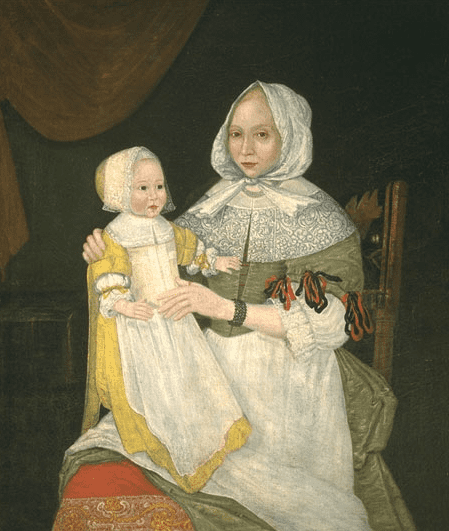
The proper hair attire for women was a neat bun and cap called a cornet or Dutch coif. Any mischievous locks or flirty curls were a sure sign of evil, a “wile of the devil.” This bland style was not cutting it with the ladies. Sermons and court records reveal the community did not take the hair policy very seriously.
The Vineland Advertiser ran an article looking back at the history of the Massachusetts Bay Colony, including fashion laws – such as this one from 1651.

Like the men, Puritan women were targeted for their puffed-up hairdos. However, they were willing to pay a high price for fashion. Several trunks landed in the Massachusetts Bay Colony, supplying all sorts of illegal garb and headdresses, including combs, ribbons, scarfs, and other contraband.
In 1921, columnist Marguerite Mooers Marshall responded to readers’ complaints about the current “blue laws” – saying, in effect, that if you think these laws are too strict, you should have seen the fashion laws the Puritans passed in the 17th century!
Despite these laws, Marshall wrote, women in the Massachusetts Bay Colony persisted in buying and wearing the “insignia of sin” which included both apparel and hair styles.
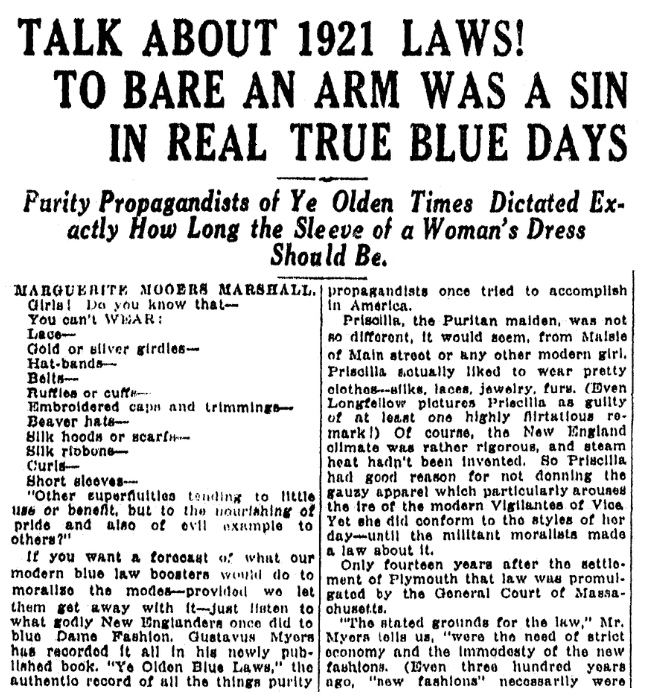
Marshall wrote that the Puritan establishment believed that these fashion crimes, namely the “cutting, curling, and immodest laying out of their hair,” practiced by sinful residents caused the rise of Indian attacks and other misfortunes!
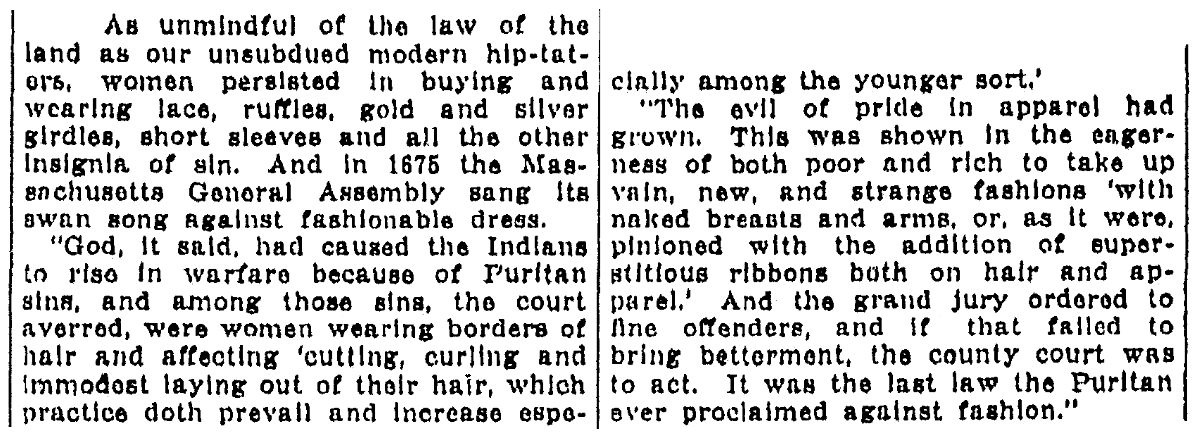
One of trendsetters of the naughty girl look was the infamous Eleanor “Nell” Gwyn (1650-1687), English stage actress and mistress to King Charles II. Many sought to emulate her sensuous hairstyles which she curled, teased, and let wild.
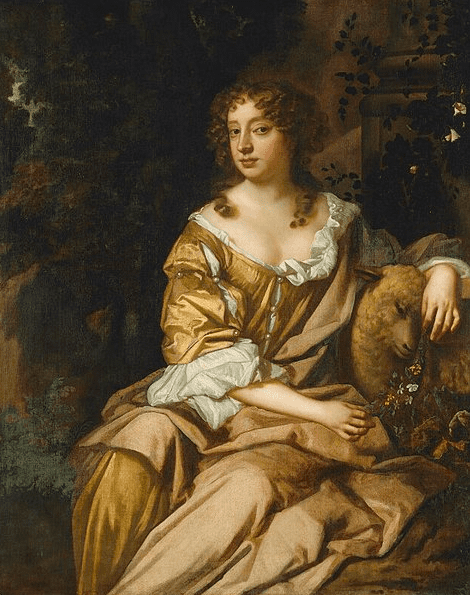
A book review of Professor Henry W. Lawrence’s Not Quite Puritans noted that Lawrence believed fashion trends that were outlawed by the Puritan fold were toppled by the late 17th century – but before freedom came, women were made to crop their sultry, sinful styles.
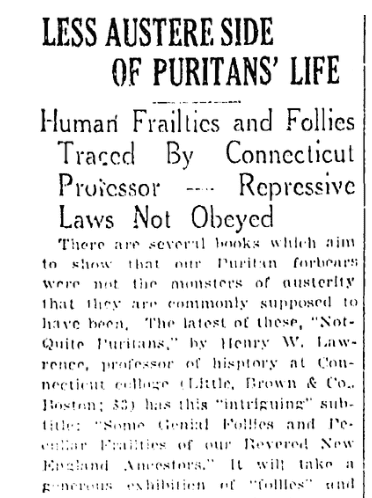
Lawrence referred to a 1682 court hearing where warrants were issued against several Massachusetts girls for “folding their hair, frizzing and knots, and for wearing silk scarves.” (If you want to see details of the case, you can read the transcription in the “Records and Files of the Quarterly Courts of Essex County.”)
The list of these daring dames included: Martha Gay; Mary Gay; Mary Rogers, daughter of Mr. Samuel Rogers; Mary Browne; Elizabeth Browne; Abigail Metcalf; Elizabeth Perkins, wife of Luke Perkins; Martha Watton, John Webster’s daughter; and Priscilla Carrell, Captain Appleton’s maid. The girls were not arrested, being discharged instead – no one appeared at the hearing to give evidence against the girls.
A sermon by Increase Mather in 1683 served up a stern message to these femme fatales, calling them “Apes of Fancy.” His disapproving words rang out from the pulpit.
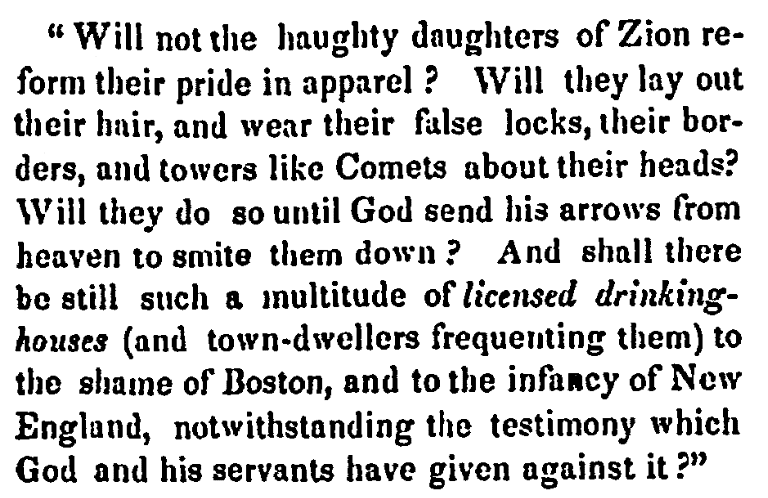
Mather referenced a hair accessory known as a “commode,” a wire lace frill that kept the hair erect when attached to a smaller cap. Other styles these women were sporting were called “heartbreakers,” which set out the hair like butterfly wings over their ears.
In their attempts to control every aspect of daily life, the Puritans were concerned with all modes of personal appearance and clothing choice. The success of the Puritan fashion police who tried desperately to conform the lads and lasses of their New Jerusalem can be summed up in this article. It reported an address delivered by the Rev. Thomas Morong on 21 December 1870 for Forefather’s Day in Ipswich, Massachusetts, which was a hotbed for frizzy and frisky hairstyles.
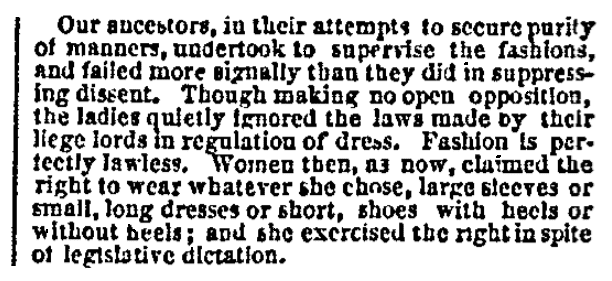
Explore over 330 years of newspapers and historical records in GenealogyBank. Discover your family story! Start a 7-Day Free Trial
Further Reading:
- New England Historic Genealogical Society. Robert Charles Anderson, “The Great Migration Begins: Immigrants to New England 1620-1633,” Volumes I-III, 3 vols., 1995, p. 254.
- “Records and Files of the Quarterly Courts of Essex County.” Volume VIII, p. 291.
- Berry, Melissa Davenport. “‘Hairstory’ Reveals Ipswich Flaunted Puritanical Power.” Ipswich Chronicle, Ipswich, Massachusetts, 2 May 2003, p. A9.
- “Ipswich in the Massachusetts Bay Colony.” Published by the Ipswich Historical Society.
Related Articles:
